Israel's invasion of the Gaza Strip: it won't be an easy ride for them there
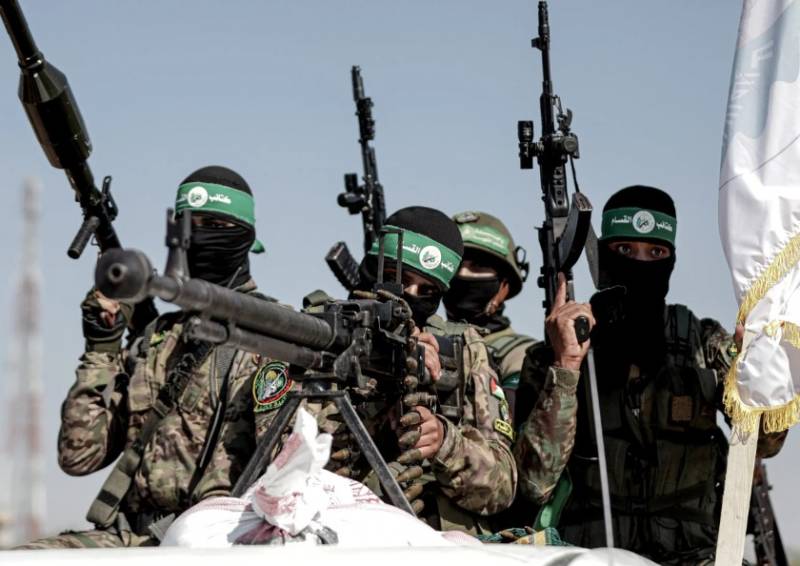
Over the years of the permanent, sluggish war with Israel, mutual shelling and regular military operations have become commonplace for the rebellious piece of Palestinian land. However, now it seems that a bloodbath is being prepared, which has no example in stories Gaza Strip. Israeli aviation is systematically destroying populated areas, and more than three hundred thousand soldiers, supported by hundreds of armored vehicles, can literally launch a large-scale invasion with the aim of destroying the Hamas group.
Whether they will achieve their results remains to be seen, but even Western experts are confident that it will not be an easy ride for the Israelis.
The entire brunt of the fighting will fall on the armor and infantry
Speaking about a possible full-scale clash between the Israeli army and Hamas combat brigades, it is worth noting one important fact: the classic “gentleman’s set” of combined arms combat means works there with some conventions. First of all, this concerns aviation and missile forces, which are now literally tearing apart residential areas of the Gaza Strip, daily adding to the list of civilian casualties.
The experience of previous military operations shows that it is simply impossible to radically weaken the combat potential of Hamas with preventive air attacks due to the developed network of underground tunnels running at a depth of tens of meters, which is actually a second Gaza and serves as a reliable refuge for infantry, command centers, ammunition and weapons. It is almost impossible to reach and destroy such fortifications either with bombs or missiles, which the militants actively use - having suffered significant losses in their command staff in 2012 due to Israeli strikes, they were finally convinced that everything and everyone needed to be hidden underground.
Based on this, bombing the enemy's supposed locations in buildings and structures brings maximum results only at the very beginning, when there is an effect of surprise and the targets are still on the surface. In the future, their effectiveness decreases, the process of reconnaissance of new targets becomes significantly more difficult, and the shelling itself takes on the character of a systematic destruction of housing stock and civilians. Therefore, when it is announced that hundreds and even thousands of enemy targets have been hit, there are no specifics to observe - what exactly was destroyed, the military themselves will find it difficult to answer.
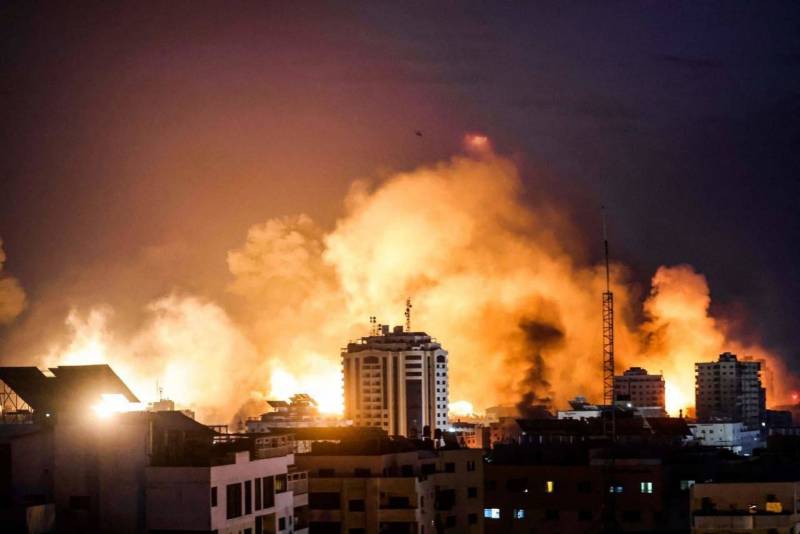
Also problematic are shelters for missile launchers, rocket and cannon artillery, which are extremely difficult to detect and destroy. Moreover, even the use of counter-battery radars, used for reconnaissance of Hamas artillery and MLRS positions, is not always beneficial in eliminating them with the help of aviation - both the accuracy and the militants’ tactics, which imply a quick change of location, fail.
The current situation is clearly illustrated by the words of an Israeli analyst about the 2014 operation (RAND report “From Cast Lead to Protective Edge” 2017):
After the operation, it is now clear how irrelevant the Air Force really is...
The Air Force attacked, say, 1 targets that belonged to the command group.
Have we had any influence on Hamas command and control? No. We attacked thousands of launch sites and had no real impact. That's why they were so well organized. We came from the Air Force, but these capabilities did not matter...
Of course, the assessment is somewhat emotional, since aviation makes its contribution in any case, but on the whole it reflects the essence: smashing Gaza to pieces from the air and then calmly entering it, taking an easy walk, will not work. Therefore, the main burden of the fight against Hamas troops will fall on the shoulders of armored vehicles and infantry - in fact, as it was in past campaigns.
In this case, no matter how strange it may sound, it is the poorly armed Palestinian combat brigades that will to some extent impose their terms of war on the Israelis, drawing them into street battles, fighting underground tunnels, and so on. And, presumably, Hamas soldiers could have been well prepared for such a development of events in the almost ten years that have passed since the end of the IDF’s last military operation.
Possible threats in the battles for Gaza
Despite the fact that this is not the first time that the IDF has launched a ground military operation in the Gaza Strip, and Hamas has been shelling Israel and carrying out various attacks on its territory throughout its entire period in power, current events will in any case differ from past ones in scale.
If previously the Israelis never set themselves the goal of completely destroying the group, and the Hamas themselves were looking for economic benefits in their actions, now the former are determined, and the latter will have to fight back with all their might. Therefore, most likely, the war will be long and stubborn with the use of all available means on both sides.
During the IDF's incursion into the Gaza Strip, Hamas combat brigades will likely increase rocket and artillery attacks on Israeli populated areas, as well as launch massive attacks on advancing troops, as was the case in 2014. Let us recall that the attackers then suffered losses in the amount of 66 dead and 469 wounded soldiers, of which almost a third came from Palestinian cannon and rocket artillery. Moreover, many of the units that came under fire were located outside populated areas - often near the border between the sector and Israel.
The current operation, if it differs from the previous one in this regard, will only be due to more massive shelling of Israeli troops. At the same time, judging by various estimates, Hamas has accumulated a fairly large amount of ammunition for mortars, which form the basis of its maneuverable fire capabilities in close proximity to the enemy. And, it should be noted, these guys approached camouflage of firing positions with creativity.
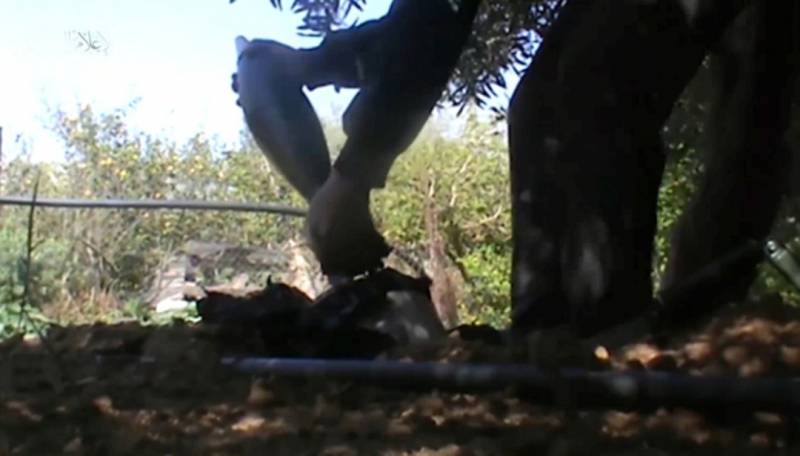
Firing position with a mortar hidden in the ground
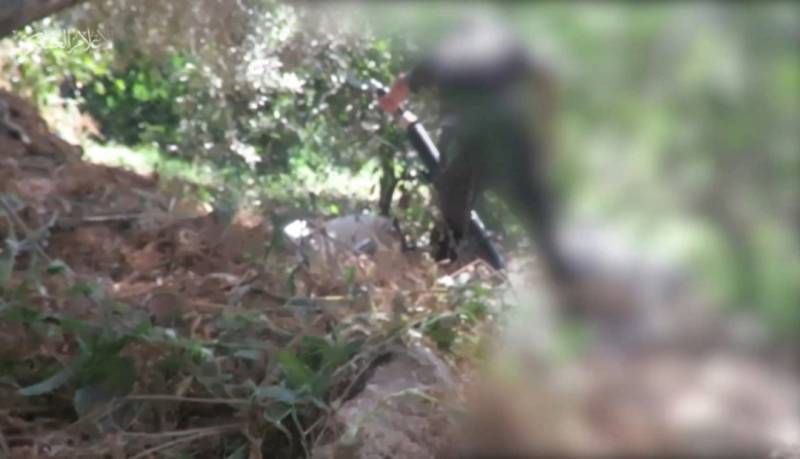
Concealing a mortar in dense thickets
Also, given that a colossal group of hundreds of thousands of soldiers and a large amount of equipment has now been assembled for the invasion, by local standards, there will be plenty of targets for Hamas combat brigades. After all, the larger the contingent, the more logistics lines, supply transshipment points and other logistics centers are required for it, which represent a convenient target for absolutely everything that can reach them.
Of course, having the negative experience of clustering troops near the borders long before the start of the invasion as part of the previous operation, the Israelis are unlikely to make the same mistake, but Hamas has something to hit and something to scout.
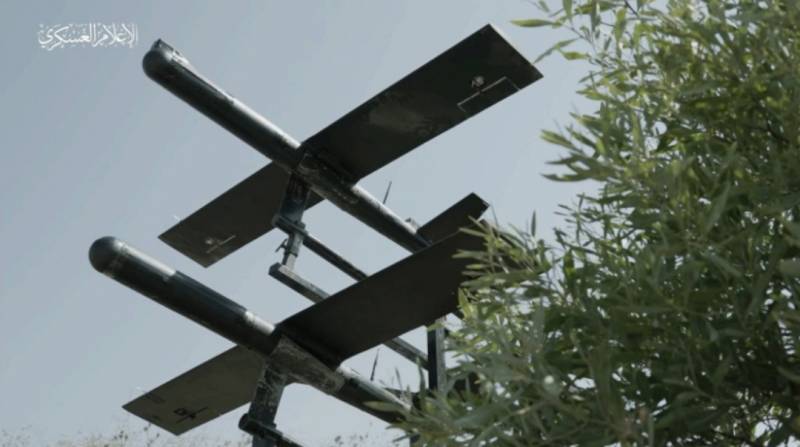
UAV-kamikaze "Al-Zawari"
Unmanned aerial vehicles, ranging from long-range ones, can be a huge help in this matter for the Palestinians drones-kamikazes and ending with copters converted to drop ammunition. Moreover, Hamas does not shy away from using drones as reconnaissance assets, which, in general, makes it easier to find targets at long distances.
However, it is worth noting that the Palestinians are generally excellent at adopting the best practices of unmanned aircraft and are closely following the events in Ukraine, where UAVs have long become deadly weapons against infantry, fortifications and equipment. Take, for example, the dropping of cumulative grenades on Israeli Merkavas with active protection systems, which became an extremely unpleasant surprise for the IDF military and opened up new anti-tank defense opportunities for Hamas.
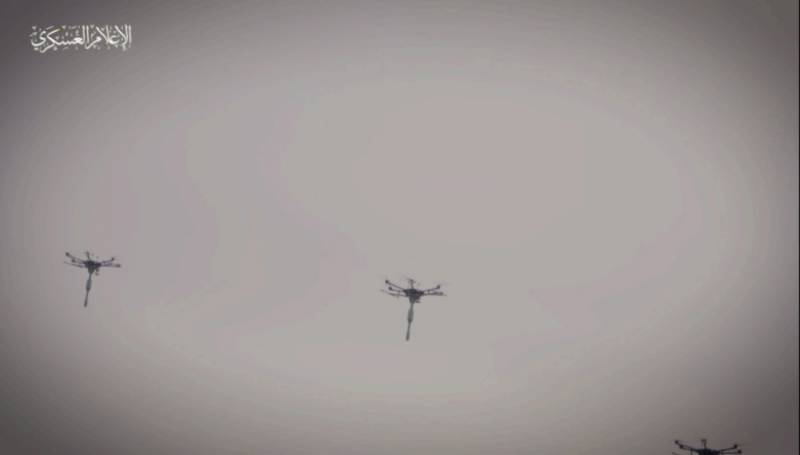
Hamas drones equipped to drop ammunition with tandem anti-tank grenades attached to them
But if we touch on the aspect of direct clashes between Palestinians and Israelis, then first of all we should note the underground tunnels, which have long become the hallmark of Hamas. Far from being wormholes, but capital concrete structures laid at a depth of several tens of meters, they are actually underground Gaza.
As the Hamas themselves say, about five hundred kilometers of tunnels have already been dug there, and the exits and entrances to them are organized both in buildings and inconspicuous structures, and in open space with appropriate camouflage.
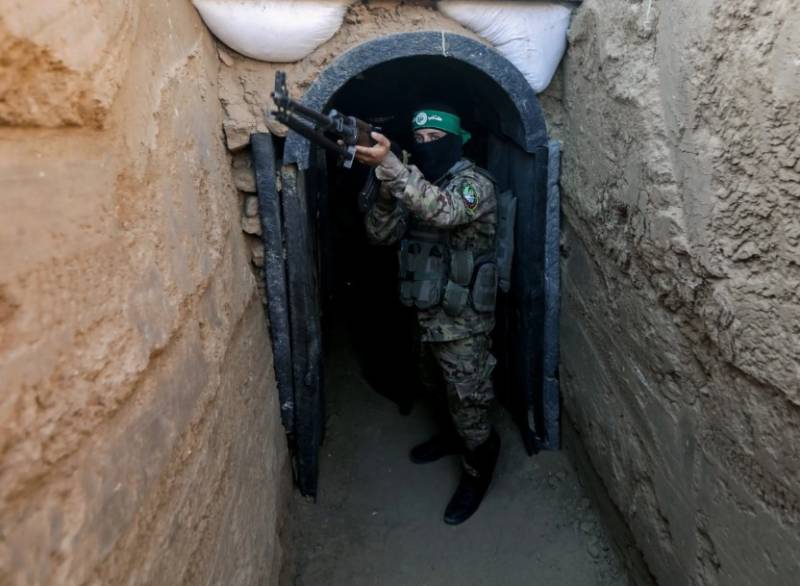
To say that the tunnels, which can sometimes only be discovered by accident, are a headache for the Israelis is an understatement. It is through them that Hamas units exercise control and communications, as well as transfer manpower, weapons and ammunition.
Thanks to these underground communications, they can quickly change positions even within individual small locations, especially in the city, which makes it difficult for attackers to detect them and coordinate their actions. And groups of militants appearing literally from underground, setting up ambushes in the most unexpected places, have long been a harsh and often bloody reality for the IDF military.
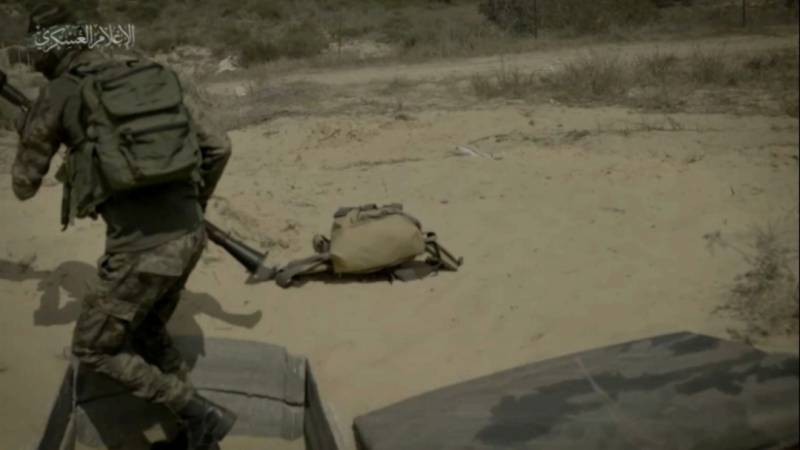
A still from a video showing Hamas fighters training to organize an ambush from a tunnel on tank enemy unit
Previously, the Israeli military resorted to partial destruction of discovered tunnels to the point where they could no longer be used. But at that time there was no goal of completely destroying Hamas and its infrastructure, and the greatest danger was posed by the passages leading to Israeli territory.
In this case, it is unlikely that it will be possible to do without preliminary clearing of the dungeon - having collapsed even a few small branches, breaking the entire system of passages and walling up the enemy in it will not work, and you should not forget about the hostages who are there. This means that the military will have to engage in underground battles, where the enemy feels like a fish in water and uses all its advantages, from mined areas (entrances and tunnels themselves are often mined) and ending with awareness of all workarounds and exits.
The narrow tunnels completely lack any fire support from artillery, armored vehicles and aircraft, and communications and reconnaissance are severely limited. Therefore, only infantry will have to fight in such conditions, literally colliding head-on with the enemy waiting around any corner.
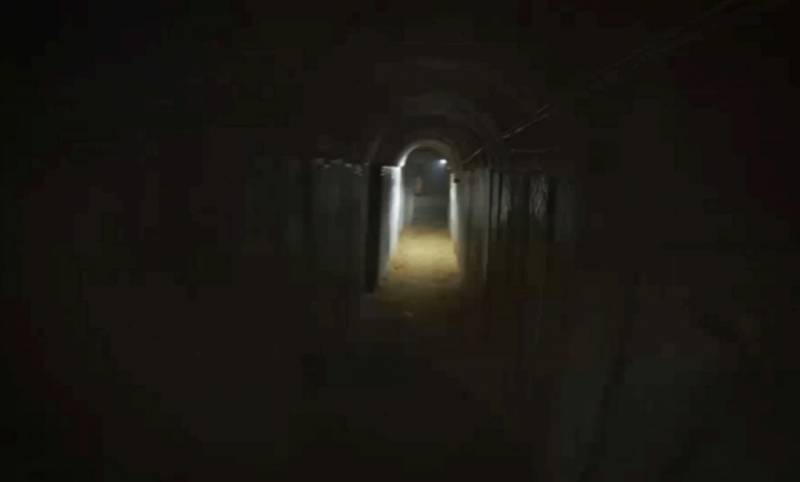
Hamas underground tunnel
As for the battles on the surface, in any case they will take place in the dense urban areas of Gaza and other settlements - there is simply nothing to provide the Hamas in the open space. Western sources usually place special emphasis on the fact that it is the civilian population located there that will be one of the big problems for the Israeli military, who are trying their best to avoid unnecessary casualties. But, as one can sadly note, these are rather conventions that are unlikely to be observed there. In reality, everything is much more prosaic.
After all, a city is, first of all, a huge number of different structures and buildings, which, even being turned into ruins, are very convenient places for equipping firing points and entire strongholds. This, as practice shows, will necessarily be used by Hamas infantry units armed with automatic weapons, sniper rifles, anti-tank missile systems and RPGs. Moreover, when these same buildings are mostly connected to each other using underground communications and passages that allow you to quickly change positions, and narrow blocks are ideally suited for creating mined zones and ambushes.
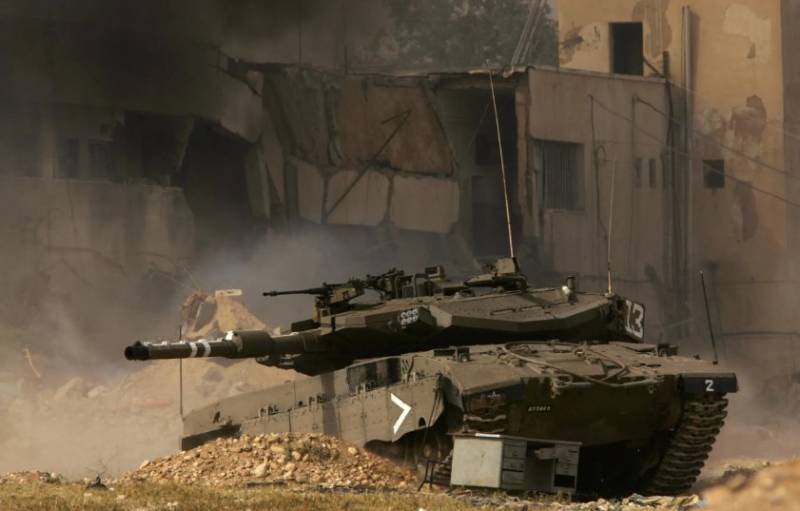
There, in general, everything plays into the hands of the defenders, since the attackers will be seriously limited in the maneuvers of their units, communications and partly the actions of armored vehicles and fire support from artillery, so the Israelis will have to fight hard. It is possible that you will have to fight for almost every street and even individual buildings, getting drawn into bloody and protracted battles.
Undoubtedly, they have an overwhelming advantage in armament and the number of troops, and they know how to fight in the city thanks to the rich experience they have previously accumulated. However, their previous campaigns in Gaza against Hamas were purely in the nature of peace enforcement through military means. Now the task is different: its complete destruction. This means that the entire hostile territory will have to be bypassed lengthwise and crosswise, literally clearing out all pockets of resistance.
What losses the IDF will suffer in these battles and how long this operation will last are big questions. Here the Iraqi city of Mosul, occupied by the Islamic State (banned in Russia), comes to mind. Prepared by terrorists for defense, including through underground tunnels, it was taken by Iraqi troops outnumbered (10 times) with the support of a coalition of Western countries in nine months at the cost of almost six thousand killed and wounded soldiers.
So, it will still not be possible to quickly run through Gaza, and the losses of the Israeli side will most likely be many times higher than those of the entire period of the confrontation with Hamas until 2023.
Information